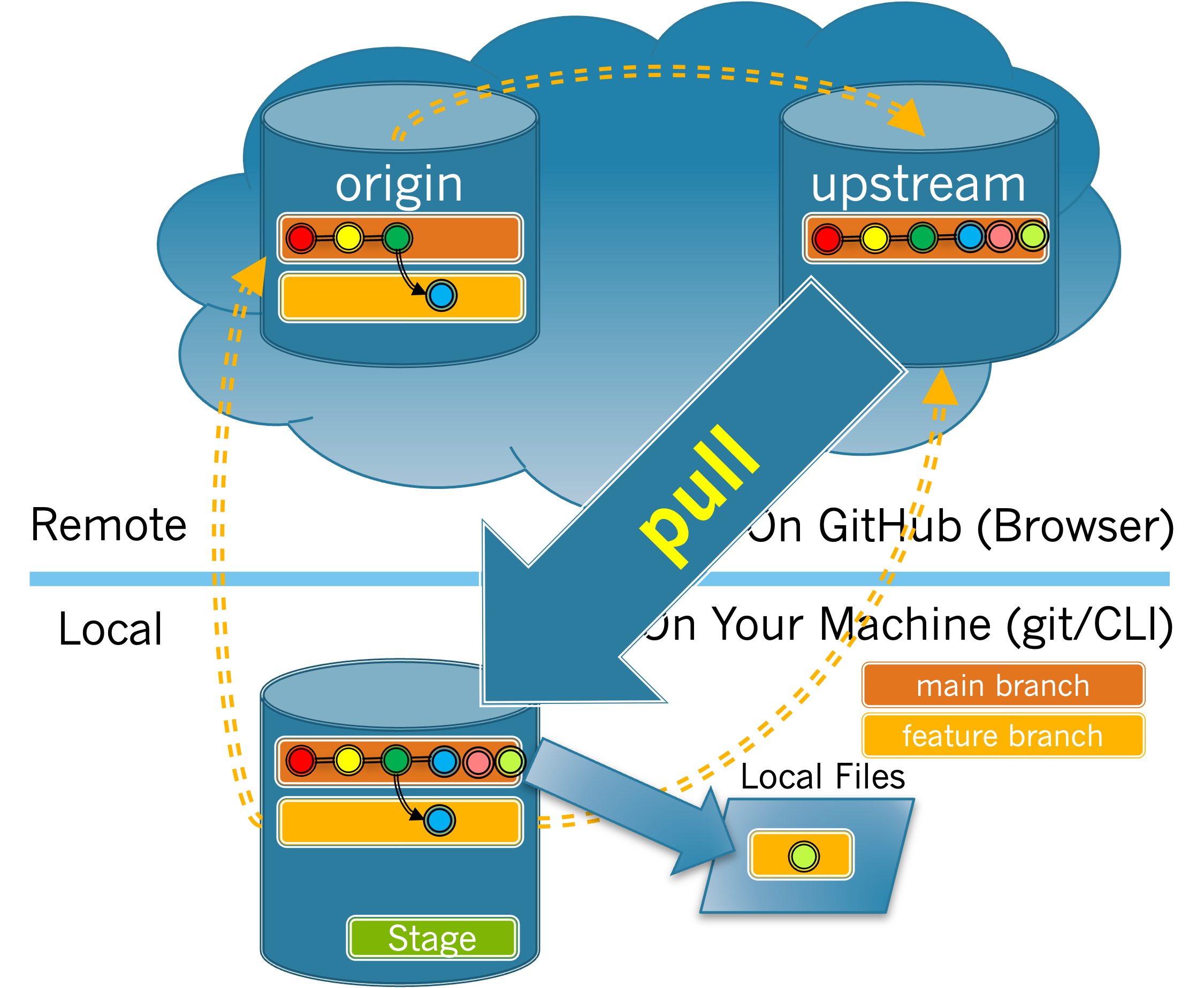1.
To pull the changes from the upstream
main branch into your local repo you first need to ensure that main is the active branch in your local repo.
(a)
Which command can you use to check if
main is the active branch?
git log- The
git logcommand gives information about the commits that have been made to the active branch. git branch main- The
git branch maincommand will try to create a new branch with the namemain. git status- Correct!
git switchgit switchis not a valid command.
(b)
git log- The
git logcommand gives information about the commits that have been made to the active branch. git branch main- The
git branch maincommand will try to create a new branch with the namemain. git status- The
git statuscommand will give you information about the active branch, it does not switch branches. git switch main- Correct!
Hint.
Refer back to the section in the previous chapter, Section 3.3 Switching Branches, on switching branches.
(c)
Use the commands you have identified in the previous tasks to ensure that
main is the active branch. Do not go on until your main branch is the active branch.

